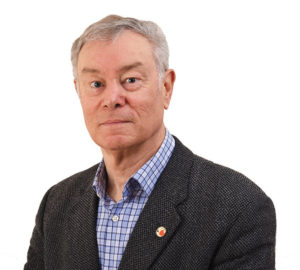Recall that in last month’s column I mentioned that RioCan’s Section 37 agreement for its Leaside Centre development (815-845 Eglinton Ave. East at Laird) included 40 affordable rental housing units to be provided on site – to be secured as affordable for 15 years, and as rental for 25 years. That’s sounds great – but is it really significant? And is it making housing in Leaside more affordable?
Not really. It means that 40 units (2.5%) of more than 1,600 units in the project will have rents at the average of Toronto’s rents (for the unit type) rather than what they would have rented for (market rent) in Leaside. This modest benefit comes with quite a big cost ($2.6M), which amounts to $115,000 per unit, justified by a policy in Toronto’s Official Plan which applies to for-profit development projects with more than 10,000 square metres of gross floor area where the zoning bylaw amendment increases the permitted density by at least 1,500 sq. m. and/or significantly increases the permitted height.
Other Leaside projects
While Section 37 agreements were secured for 939 Eglinton Ave. East at Brentcliffe (Diamond) and 660 Eglinton Ave. East – Sunnybrook Plaza at Bayview (RioCan), neither specified affordable housing as community benefits. Other Leaside projects such as 2 Laird/25 Malcolm (Upper House) and 146-150 Laird (seniors’ residence and apartments) south of McRae did not involve Section 37 as they were too small. Recent projects on the west side of Bayview (1674-1684 and 1410-1420 Bayview) are also too small. So, the Leaside Centre is the only Leaside project to date with an affordable housing component.
Using Section 37 for affordable housing units also means less money for badly needed public realm and recreation improvements under community benefits. Affordable housing is a social good that arguably should be paid for by federal and provincial governments through progressive income taxes. The province and the federal government are the only governments with access to revenue sources like income taxes that generate sufficient funds to pay the significant costs of affordable housing. Despite Mayor Tory’s recent decision to use a special levy on property taxes for designated transportation and housing programs, there are definite limits to how much can be raised – property taxes are simply not up to the job.
How else to allow for affordable housing?
The other way to allow for affordable housing is through Inclusive Zoning whereby there is at least a minimum percentage of affordable units in all developments. That policy was proposed by the previous provincial government and has been restricted by the current government to Major Transit Station Areas (MTSAs), but is awaiting release of the regulations.
Affordable housing means reduced rents for a defined number of units for a period of time, but the bigger question remains – how to make (all) housing more affordable? Housing affordability is generally defined as the number of homes that a household with a certain percentage of median income can afford. Leasiders are very aware that housing has become less affordable. While many have benefited from the rise in house values, others worry how their children and grandchildren will be able to afford to buy a house, or even stay in the city. A recent report from Social Planning Toronto, “Toronto After a Decade of Austerity: The Good, The Bad and the Ugly,” makes the case for Council to increase affordability (and also to raise new revenues to pay for more affordable housing) through increasing the municipal land transfer tax on luxury homes, introducing a vacant home tax, and reintroducing the vehicle registration tax. Sounds like a plan!


